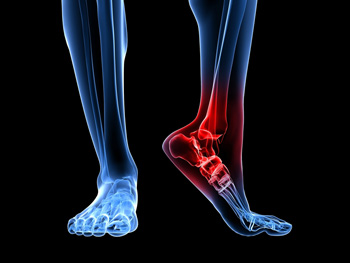Blog - Foot Doctor, Chambersburg and McConnellsburg, PA
What Heel Pain Can Tell You
There are several ways to experience heel pain. The heel can be tender, may hurt upon waking up in the morning, or may possibly have a burning sensation. A few common causes of this type of pain include being overweight, standing for long periods of time, and running for exercise. One diagnosis may be plantar fasciitis, which may make it difficult to be on your feet all day. Resting the feet and applying an ice pack may aid in the reduction of pain. Stretching the foot on a daily basis is also an effective form of pain relief. Another way of treating heel pain is to consult a podiatrist and see if you need to be fitted for orthotics. The chances of recovery are generally good when using a combination of these heel pain therapies.
Many people suffer from bouts of heel pain. For more information, contact Dr. Steven Schwartz of Pennsylvania. Our doctor can provide the care you need to keep you pain-free and on your feet.
Causes of Heel Pain
Heel pain is often associated with plantar fasciitis. The plantar fascia is a band of tissues that extends along the bottom of the foot. A rip or tear in this ligament can cause inflammation of the tissue.
Achilles tendonitis is another cause of heel pain. Inflammation of the Achilles tendon will cause pain from fractures and muscle tearing. Lack of flexibility is also another symptom.
Heel spurs are another cause of pain. When the tissues of the plantar fascia undergo a great deal of stress, it can lead to ligament separation from the heel bone, causing heel spurs.
Why Might Heel Pain Occur?
- Wearing ill-fitting shoes
- Wearing non-supportive shoes
- Weight change
- Excessive running
Treatments
Heel pain should be treated as soon as possible for immediate results. Keeping your feet in a stress-free environment will help. If you suffer from Achilles tendonitis or plantar fasciitis, applying ice will reduce the swelling. Stretching before an exercise like running will help the muscles. Using all these tips will help make heel pain a condition of the past.
If you have any questions please contact our offices located in Chambersburg, and Mcconnellsburg, PA . We offer the newest diagnostic and treatment technologies for all your foot and ankle needs.
How to Properly Cut Your Toenails and Avoid Ingrown Toenails
 While it may seem obvious how to clip your toenails, many people clip them the wrong way. Clipping your toenails improperly can cause the nail to become ingrown. While generally not serious, it can cause pain and discomfort. If you are a diabetic, an ingrown toenail can be a serious health risk, and it is advised to see a podiatrist if you have one. To help prevent ingrown toenails, cut them straight across and not as a rounded edge. Furthermore, do not clip them too short as this can also increase the risk of an ingrown toenail. Lastly, wearing shoes that don’t press against your toenails can help prevent the nail from becoming compressed and ingrown.
While it may seem obvious how to clip your toenails, many people clip them the wrong way. Clipping your toenails improperly can cause the nail to become ingrown. While generally not serious, it can cause pain and discomfort. If you are a diabetic, an ingrown toenail can be a serious health risk, and it is advised to see a podiatrist if you have one. To help prevent ingrown toenails, cut them straight across and not as a rounded edge. Furthermore, do not clip them too short as this can also increase the risk of an ingrown toenail. Lastly, wearing shoes that don’t press against your toenails can help prevent the nail from becoming compressed and ingrown.
Ingrown toenails can become painful if they are not treated properly. For more information about ingrown toenails, contact Dr. Steven Schwartz of Pennsylvania. Our doctor can provide the care you need to keep you pain-free and on your feet.
Ingrown Toenails
Ingrown toenails occur when a toenail grows sideways into the bed of the nail, causing pain, swelling, and possibly infection.
Causes
- Bacterial infections
- Improper nail cutting such as cutting it too short or not straight across
- Trauma to the toe, such as stubbing, which causes the nail to grow back irregularly
- Ill-fitting shoes that bunch the toes too close together
- Genetic predisposition
Prevention
Because ingrown toenails are not something found outside of shoe-wearing cultures, going barefoot as often as possible will decrease the likeliness of developing ingrown toenails. Wearing proper fitting shoes and using proper cutting techniques will also help decrease your risk of developing ingrown toenails.
Treatment
Ingrown toenails are a very treatable foot condition. In minor cases, soaking the affected area in salt or antibacterial soaps will not only help with the ingrown nail itself, but also help prevent any infections from occurring. In more severe cases, surgery is an option. In either case, speaking to your podiatrist about this condition will help you get a better understanding of specific treatment options that are right for you.
If you have any questions please feel free to contact our offices located in Chambersburg, and Mcconnellsburg, PA . We offer the newest diagnostic and treatment technologies for all your foot and ankle needs.
Causes and Symptoms of Athlete's Foot
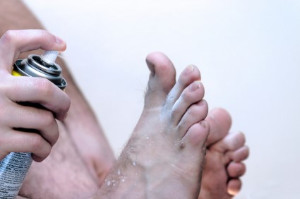 If you are experiencing scaly and peeling skin, itchiness, and redness on the soles of the feet or in between the toes, you may have athlete's foot. Athlete's foot, also known as "jungle rot" to military service members, is a fungal infection of the foot. In some cases, small blisters can form and pain can be present as well. The fungus can be contagious and can come from many sources, including gyms, locker rooms, swimming pools, public showers, nail salons, and contaminated clothing. Topical creams are a common treatment for this condition, however, seeing a podiatrist is often a better option. Above all, prevention is the best method to stop athlete's foot which means keeping the feet dry and protected from certain environments. Tips on how to prevent athlete's foot include: wearing sweat-absorbent socks, breathable shoes, using foot powder, washing the feet daily, and wearing shower shoes in locker rooms and showers.
If you are experiencing scaly and peeling skin, itchiness, and redness on the soles of the feet or in between the toes, you may have athlete's foot. Athlete's foot, also known as "jungle rot" to military service members, is a fungal infection of the foot. In some cases, small blisters can form and pain can be present as well. The fungus can be contagious and can come from many sources, including gyms, locker rooms, swimming pools, public showers, nail salons, and contaminated clothing. Topical creams are a common treatment for this condition, however, seeing a podiatrist is often a better option. Above all, prevention is the best method to stop athlete's foot which means keeping the feet dry and protected from certain environments. Tips on how to prevent athlete's foot include: wearing sweat-absorbent socks, breathable shoes, using foot powder, washing the feet daily, and wearing shower shoes in locker rooms and showers.
Athlete’s foot is an inconvenient condition that can be easily reduced with the proper treatment. If you have any concerns about your feet and ankles, contact Dr. Steven Schwartz from Pennsylvania. Our doctor will treat your foot and ankle needs.
Athlete’s Foot: The Sole Story
Athlete's foot, also known as tinea pedis, can be an extremely contagious foot infection. It is commonly contracted in public changing areas and bathrooms, dormitory style living quarters, around locker rooms and public swimming pools, or anywhere your feet often come into contact with other people.
Solutions to Combat Athlete’s Foot
- Hydrate your feet by using lotion
- Exfoliate
- Buff off nails
- Use of anti-fungal products
- Examine your feet and visit your doctor if any suspicious blisters or cuts develop
Athlete’s foot can cause many irritating symptoms such as dry and flaking skin, itching, and redness. Some more severe symptoms can include bleeding and cracked skin, intense itching and burning, and even pain when walking. In the worst cases, Athlete’s foot can cause blistering as well. Speak to your podiatrist for a better understanding of the different causes of Athlete’s foot, as well as help in determining which treatment options are best for you.
If you have any questions please feel free to contact our offices located in Chambersburg, and Mcconnellsburg, PA . We offer the newest diagnostic and treatment technologies for all your foot and ankle needs.
Tips on Exercising for Diabetics
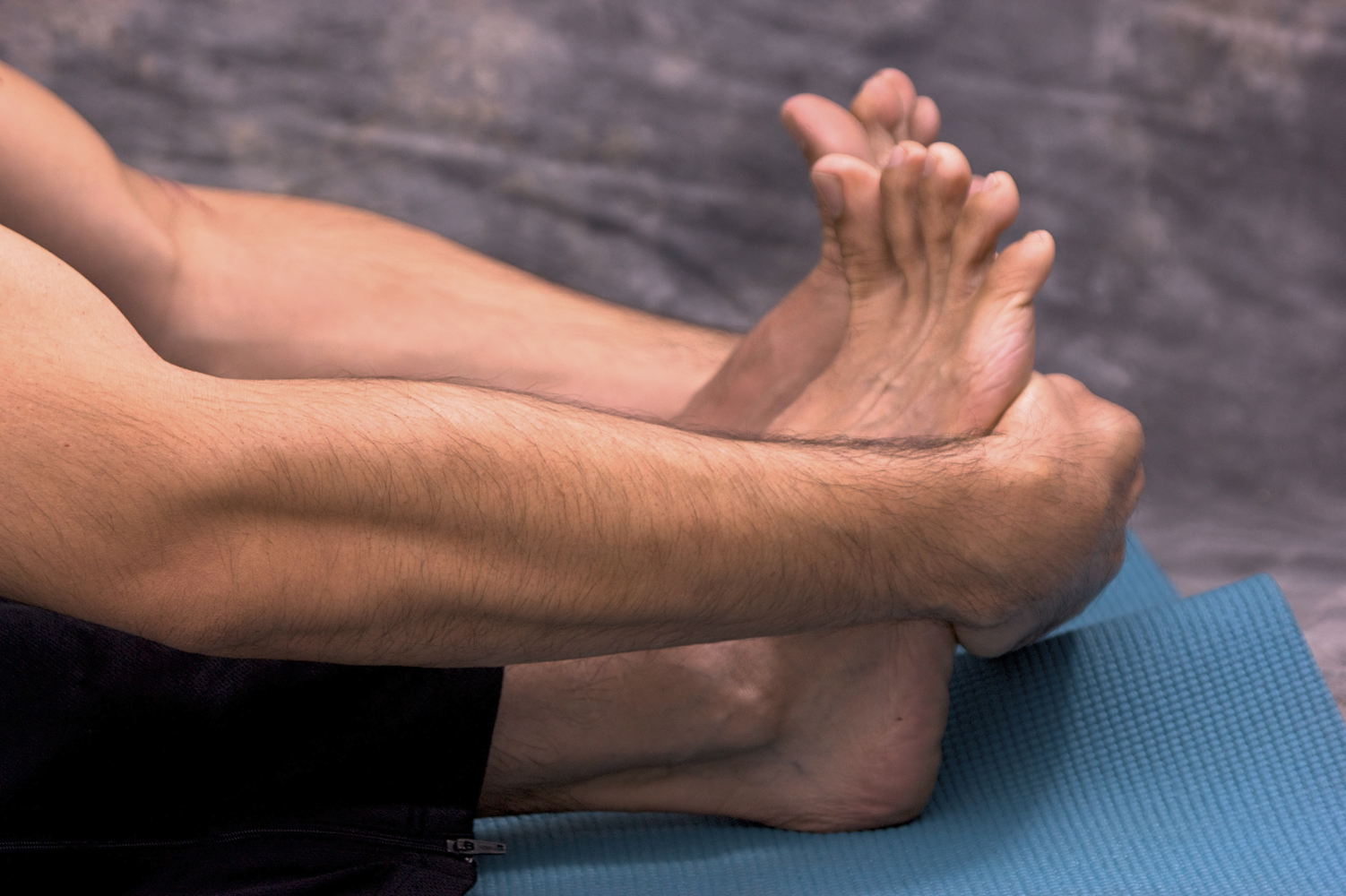 Maintaining a healthy diet and exercising can be a good way to keep your diabetes in check. However, there are some things to keep in mind and on hand if you do decide to workout. First, it is recommended to see a podiatrist to see if exercising is right for you. That being said, there are a few things that are helpful to have on hand while exercising. A blood glucose meter is a great way to check your blood sugar level before you exercise. Blood glucose tablets can help correct low blood sugar levels and ensure you are in a good state. If you do feel shaky or light-headed, it is important to relax and stop exercising. Having some snacks with you to help prevent low blood sugar is also recommended. It is important to stay hydrated while working out, especially for diabetics, because dehydration can cause high blood glucose levels. Finally, wearing a good pair of shoes is an important step in preventing foot ulcers and keeping your feet supported. Podiatrists can help recommend shoes based on your foot type or provide orthotics. Diabetes can be a difficult condition to live with; however, exercising while taking proper safety measures can be a great way to keep it in check.
Maintaining a healthy diet and exercising can be a good way to keep your diabetes in check. However, there are some things to keep in mind and on hand if you do decide to workout. First, it is recommended to see a podiatrist to see if exercising is right for you. That being said, there are a few things that are helpful to have on hand while exercising. A blood glucose meter is a great way to check your blood sugar level before you exercise. Blood glucose tablets can help correct low blood sugar levels and ensure you are in a good state. If you do feel shaky or light-headed, it is important to relax and stop exercising. Having some snacks with you to help prevent low blood sugar is also recommended. It is important to stay hydrated while working out, especially for diabetics, because dehydration can cause high blood glucose levels. Finally, wearing a good pair of shoes is an important step in preventing foot ulcers and keeping your feet supported. Podiatrists can help recommend shoes based on your foot type or provide orthotics. Diabetes can be a difficult condition to live with; however, exercising while taking proper safety measures can be a great way to keep it in check.
Diabetic foot care is important in preventing foot ailments such as ulcers. If you are suffering from diabetes or have any other concerns about your feet, contact Dr. Steven Schwartz from Pennsylvania. Our doctor can provide the care you need to keep you pain-free and on your feet.
Diabetic Foot Care
Diabetes affects millions of people every year. The condition can damage blood vessels in many parts of the body, especially the feet. Because of this, taking care of your feet is essential if you have diabetes, and having a podiatrist help monitor your foot health is highly recommended.
The Importance of Caring for Your Feet
- Routinely inspect your feet for bruises or sores.
- Wear socks that fit your feet comfortably.
- Wear comfortable shoes that provide adequate support.
Patients with diabetes should have their doctor monitor their blood levels, as blood sugar levels play such a huge role in diabetic care. Monitoring these levels on a regular basis is highly advised.
It is always best to inform your healthcare professional of any concerns you may have regarding your feet, especially for diabetic patients. Early treatment and routine foot examinations are keys to maintaining proper health, especially because severe complications can arise if proper treatment is not applied.
If you have any questions please feel free to contact our offices located in Chambersburg, and Mcconnellsburg, PA . We offer the newest diagnostic and treatment technologies for all your foot and ankle needs.
Washington Wizards Guard Tears Achilles Tendon
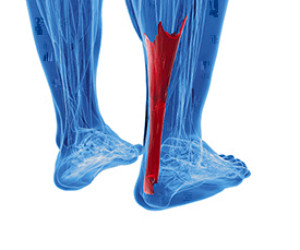 Basketball player Sheldon Mac of the Wizards has recently torn his left Achilles tendon and will need to undergo surgery to repair it. He will very likely be out for the rest of the season. His recovery timetable is around six to eight months. If there is any good news for Mac, it's that his contract guarantees him 1.3 million dollars. Of course, that doesn't really give much solace to the fans.
Basketball player Sheldon Mac of the Wizards has recently torn his left Achilles tendon and will need to undergo surgery to repair it. He will very likely be out for the rest of the season. His recovery timetable is around six to eight months. If there is any good news for Mac, it's that his contract guarantees him 1.3 million dollars. Of course, that doesn't really give much solace to the fans.
Achilles tendon injuries need immediate attention to avoid future complications. If you have any concerns, contact Dr. Steven Schwartz of Pennsylvania. Our doctor can provide the care you need to keep you pain-free and on your feet.
What Is the Achilles Tendon?
The Achilles tendon is a tendon that connects the lower leg muscles and calf to the heel of the foot. It is the strongest tendon in the human body and is essential for making movement possible. Because this tendon is such an integral part of the body, any injuries to it can create immense difficulties and should immediately be presented to a doctor.
What Are the Symptoms of an Achilles Tendon Injury?
There are various types of injuries that can affect the Achilles tendon. The two most common injuries are Achilles tendinitis and ruptures of the tendon.
Achilles Tendinitis Symptoms
- Inflammation
- Dull to severe pain
- Increased blood flow to the tendon
- Thickening of the tendon
Rupture Symptoms
- Extreme pain and swelling in the foot
- Total immobility
Treatment and Prevention
Achilles tendon injuries are diagnosed by a thorough physical evaluation, which can include an MRI. Treatment involves rest, physical therapy, and in some cases, surgery. However, various preventative measures can be taken to avoid these injuries, such as:
- Thorough stretching of the tendon before and after exercise
- Strengthening exercises like calf raises, squats, leg curls, leg extensions, leg raises, lunges, and leg presses
If you have any questions please feel free to contact our offices located in Chambersburg, and Mcconnellsburg, PA . We offer the newest diagnostic tools and technology to treat your foot and ankle needs.
How and Why Athletes Should Care for Their Feet
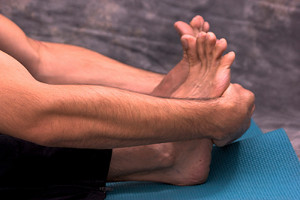 While we should all take care of our feet, those who are active should be more proactive when it comes to foot care. Athletes and physically active people generally subject their feet to more stress than an average person normally would. This can increase their risk for foot injury and ailments. Here are some tips that active people can follow to help prevent injury. Make sure to pick the right shoes for the right activity. If you run, running shoes are best; if you play tennis, go with tennis shoes. Picking a quality pair of moisture-wicking socks can also help prevent foot fungus by keeping the feet dry. Runners reportedly also often suffer from dry skin on their feet. To help prevent dry feet, use a good moisturizer. Washing them often is a good way to keep them hydrated while also helping to prevent foot and toenail fungus. If you workout, don’t forget to workout your feet. Strong feet will aid in preventing foot injuries. Upon completing a workout make sure to give your feet time to rest. Finally, if your feet hurt, stop exercising and avoid putting pressure on them. If the pain doesn't go away it is recommended to see a podiatrist.
While we should all take care of our feet, those who are active should be more proactive when it comes to foot care. Athletes and physically active people generally subject their feet to more stress than an average person normally would. This can increase their risk for foot injury and ailments. Here are some tips that active people can follow to help prevent injury. Make sure to pick the right shoes for the right activity. If you run, running shoes are best; if you play tennis, go with tennis shoes. Picking a quality pair of moisture-wicking socks can also help prevent foot fungus by keeping the feet dry. Runners reportedly also often suffer from dry skin on their feet. To help prevent dry feet, use a good moisturizer. Washing them often is a good way to keep them hydrated while also helping to prevent foot and toenail fungus. If you workout, don’t forget to workout your feet. Strong feet will aid in preventing foot injuries. Upon completing a workout make sure to give your feet time to rest. Finally, if your feet hurt, stop exercising and avoid putting pressure on them. If the pain doesn't go away it is recommended to see a podiatrist.
Everyday foot care is very important to prevent infection and other foot ailments. If you need your feet checked, contact Dr. Steven Schwartz from Pennsylvania. Our doctor can provide the care you need to keep you pain-free and on your feet.
Everyday Foot Care
Often, people take care of their bodies, face and hair more so than they do for their feet. But the feet are a very important aspect of our bodies, and one that we should pay more attention to. Without our feet, we would not be able to perform most daily tasks.
It is best to check your feet regularly to make sure there are no new bruises or cuts that you may not have noticed before. For dry feet, moisturizer can easily be a remedy and can be applied as often as necessary to the affected areas. Wearing shoes that fit well can also help you maintain good foot health, as well as making it easier to walk and do daily activities without the stress or pain of ill-fitting shoes, high heels, or even flip flops. Wearing clean socks with closed shoes is important to ensure that sweat and bacteria do not accumulate within the shoe. Clean socks help to prevent Athlete’s foot, fungi problems, bad odors, and can absorb sweat.
If you have any questions please feel free to contact our offices located in Chambersburg, and Mcconnellsburg, PA . We offer the newest diagnostic and treatment technologies for all your foot and ankle needs.
What to Look for in a New Pair of Shoes
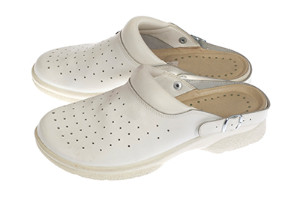 When it comes to shoe shopping, many people may feel overwhelmed by the amount of options available and what they should look for in a shoe. Here are some tips to find the right pair of shoes for you. First, don’t skimp out and buy a cheap pair of shoes; they tend to be of poor comfort and quality. While this doesn’t mean you necessarily need to spend more money, be warier of cheaper shoes. Remember that if you are wearing these shoes all day, buying a more expensive pair that provides top comfort and quality will ultimately be worth it. When you go to try on a new pair, go in the afternoon because feet swell during the day and are at their largest in the afternoon. A pair that fits well in the morning may not in the afternoon, so be on the lookout. Shoes should be snug, not too tight but not too loose. They should also provide wiggle room for the toes. Above all, shoes should be comfortable enough to wear for long periods of time; this is one of the most important tips you can follow.
When it comes to shoe shopping, many people may feel overwhelmed by the amount of options available and what they should look for in a shoe. Here are some tips to find the right pair of shoes for you. First, don’t skimp out and buy a cheap pair of shoes; they tend to be of poor comfort and quality. While this doesn’t mean you necessarily need to spend more money, be warier of cheaper shoes. Remember that if you are wearing these shoes all day, buying a more expensive pair that provides top comfort and quality will ultimately be worth it. When you go to try on a new pair, go in the afternoon because feet swell during the day and are at their largest in the afternoon. A pair that fits well in the morning may not in the afternoon, so be on the lookout. Shoes should be snug, not too tight but not too loose. They should also provide wiggle room for the toes. Above all, shoes should be comfortable enough to wear for long periods of time; this is one of the most important tips you can follow.
Getting the right shoe size is an important part of proper foot health. Seek the assistance of Dr. Steven Schwartz from Pennsylvania. Our doctor will provide the care you need to keep you pain-free and on your feet.
Getting the Right Shoe Size
There are many people who wear shoes that are the incorrect size, negatively affecting their feet and posture. Selecting the right shoes is not a difficult process, so long as you keep several things in mind when it comes to choosing the right pair.
- When visiting the shoe store, use the tools available to measure your foot.
- Be sure there is ‘wiggle room’. There should be about an inch between your toes and the tip of your shoes.
- Do not always assume you are the same size, as manufacturers run differently.
- Purchase shoes later in the day, as your feet swell as the day progresses.
- If a shoe is not comfortable, it is not suitable. Most shoes can’t be ‘broken in’, and comfort should be the ultimate goal when it comes to choosing the right pair of shoes
As our feet hold our body weight and keep us moving, it is important to treat them right. Picking the right pair of shoes can provide your feet comfort and mobility without pain.
If you have any questions, please feel free to contact our offices located in Chambersburg, and Mcconnellsburg, PA . We offer the newest diagnostic and treatment technologies for all your foot care needs.
The Importance of Exercising Feet
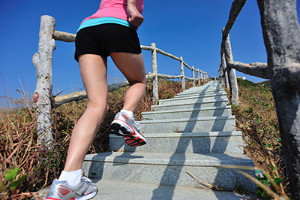 The foot is one of the most important body parts when it comes to most athletic activities. Therefore, it is important for athletes to not neglect working out the foot muscles. There are a number of positive benefits to doing this. These include increased stability, control, and power. Working out the feet will also help prevent injuries to the foot by increasing durability. Exercises that work out the feet include toe raises, toe curls, and calf raises. Once finished, rolling out the foot with a tennis ball or foam roller is advised to stretch the muscles post-workout. If you do decide to do foot exercises, it is important to start slow and know what type of foot you have. For those with flat feet, it is recommended to wear shoes that provide proper support as this will allow for a safer exercising experience.
The foot is one of the most important body parts when it comes to most athletic activities. Therefore, it is important for athletes to not neglect working out the foot muscles. There are a number of positive benefits to doing this. These include increased stability, control, and power. Working out the feet will also help prevent injuries to the foot by increasing durability. Exercises that work out the feet include toe raises, toe curls, and calf raises. Once finished, rolling out the foot with a tennis ball or foam roller is advised to stretch the muscles post-workout. If you do decide to do foot exercises, it is important to start slow and know what type of foot you have. For those with flat feet, it is recommended to wear shoes that provide proper support as this will allow for a safer exercising experience.
Exercising your feet regularly with the proper foot wear is a great way to prevent injuries and build strength. If you have any concerns about your feet, contact Dr. Steven Schwartz from Pennsylvania. Our doctor can provide the care you need to keep you pain-free and on your feet.
Exercise for Your Feet
Exercise for your feet can help you gain strength, mobility and flexibility in your feet. They say that strengthening your feet can be just as rewarding as strengthening another part of the body. Your feet are very important, and we often forget about them in our daily tasks. But it is because of our feet that are we able to get going and do what we need to. For those of us fortunate enough to not have any foot problems, it is an important gesture to take care of them to ensure good health in the long run.
Some foot health exercises can include ankle pumps, tip-toeing, toe rises, lifting off the floor doing reps and sets, and flexing the toes. It is best to speak with Our doctor to determine an appropriate regimen for your needs. Everyone’s needs and bodies are different, and the activities required to maintain strength in the feet vary from individual to individual.
Once you get into a routine of doing regular exercise, you may notice a difference in your feet and how strong they may become.
If you have any questions please feel free to contact our offices located in Chambersburg, and Mcconnellsburg, PA . We offer the newest diagnostic and treatment technologies for all your foot and ankle needs.
What to Look for in Children’s Shoes
 Choosing the right pair of shoes is essential for children. This is due to the fact that children’s feet are still developing, so shoes that aren’t of good quality or fit can potentially create foot problems. When shopping for shoes for your children, make sure they fit properly and that they are durable as well. Rubber soles are recommended to provide good grip and prevent falls. Ensure that the toe-box provides enough wiggle room for their toes and that shoes are made of breathable materials like leather or mesh. Shoes should be stiff where the sole thickens, but flexible where the toes are. It may be tempting to buy shoes that are bigger so that their feet will grow into them, but this could lead to tripping and potential injury. Every child is different, so taking your child to get properly fitted is always recommended.
Choosing the right pair of shoes is essential for children. This is due to the fact that children’s feet are still developing, so shoes that aren’t of good quality or fit can potentially create foot problems. When shopping for shoes for your children, make sure they fit properly and that they are durable as well. Rubber soles are recommended to provide good grip and prevent falls. Ensure that the toe-box provides enough wiggle room for their toes and that shoes are made of breathable materials like leather or mesh. Shoes should be stiff where the sole thickens, but flexible where the toes are. It may be tempting to buy shoes that are bigger so that their feet will grow into them, but this could lead to tripping and potential injury. Every child is different, so taking your child to get properly fitted is always recommended.
Making sure that your children maintain good foot health is very important as they grow. If you have any questions, contact Dr. Steven Schwartz of Pennsylvania. Our doctor can provide the care you need to keep you pain-free and on your feet.
Keeping Children's Feet Healthy
Having healthy feet during childhood can help prevent medical problems later in life, namely in the back and legs. As children grow, their feet require different types of care. Here are some things to consider...
Although babies do not walk yet, it is still very important to take care of their feet.
Avoid putting tight shoes or socks on his or her feet.
Allow the baby to stretch and kick his or her feet to feel comfortable.
As a toddler, kids are now on the move and begin to develop differently. At this age, toddlers are getting a feel for walking, so don’t be alarmed if your toddler is unsteady or ‘walks funny’.
As your child gets older, it is important to teach them how to take care of their feet.
Show them proper hygiene to prevent infections such as fungus.
Be watchful for any pain or injury.
Have all injuries checked by a doctor as soon as possible.
Comfortable, protective shoes should always be worn, especially at play.
If you have any questions please feel free to contact our offices located in Chambersburg, and Mcconnellsburg, PA . We offer the newest diagnostic and treatment technologies for all your foot and ankle needs.
What are Stress Fractures and Ways to Prevent Them
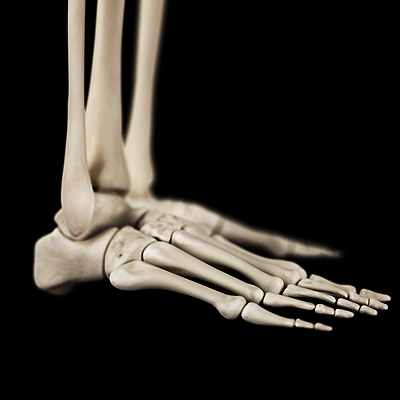 Stress fractures, or painful hairline fractures of the bone caused by fatigue, can happen to anyone. While small, they can be serious if not taken care of. Treatment generally involves rest, but prevention is always preferential. To prevent stress fractures, start with upping your calcium and vitamin D intake. Both calcium and vitamin D help promote healthy bones, which can prevent fractures. A good pair of sneakers can help prevent stress fractures in addition to a number of other foot injuries. At least one study shows that improper running stride can increase the likelihood of injury. Those who are very skinny are more likely to suffer from fractures, so maintaining a healthy body weight and diet is essential. Last but not least, when exercising be sure to gradually increase intensity over time; do not do this immediately. Fatigue from overuse is a common cause for stress fractures, so knowing your limit is an important part of preventing injury. If you think you have suffered a stress fracture in the foot, see a podiatrist immediately for a proper diagnosis.
Stress fractures, or painful hairline fractures of the bone caused by fatigue, can happen to anyone. While small, they can be serious if not taken care of. Treatment generally involves rest, but prevention is always preferential. To prevent stress fractures, start with upping your calcium and vitamin D intake. Both calcium and vitamin D help promote healthy bones, which can prevent fractures. A good pair of sneakers can help prevent stress fractures in addition to a number of other foot injuries. At least one study shows that improper running stride can increase the likelihood of injury. Those who are very skinny are more likely to suffer from fractures, so maintaining a healthy body weight and diet is essential. Last but not least, when exercising be sure to gradually increase intensity over time; do not do this immediately. Fatigue from overuse is a common cause for stress fractures, so knowing your limit is an important part of preventing injury. If you think you have suffered a stress fracture in the foot, see a podiatrist immediately for a proper diagnosis.
Activities where too much pressure is put on the feet can cause stress fractures. To learn more, contact Dr. Steven Schwartz from Pennsylvania. Our doctor can provide the care you need to keep your pain free and on your feet.
Dealing with Stress Fractures of the Foot and Ankle
Stress fractures occur in the foot and ankle when muscles in these areas weaken from too much or too little use. The feet and ankles then lose support when walking or running from the impact of the ground. Since there is no protection, the bones receive the full impact of each step. Stress on the feet can cause cracks to form in the bones, thus creating stress fractures.
What Are Stress Fractures?
Stress fractures occur frequently in individuals whose daily activities cause great impact on the feet and ankles. Stress factors are most common among:
- Runners
- People affected with Osteoporosis
- Tennis or basketball players
- Gymnasts
- High impact workouts
Symptoms
Pain from the fractures occur in the area of the fractures and can be constant or intermittent. It will often cause sharp or dull pain with swelling and tenderness. Engaging in any kind of activity which involves high impact will aggravate pain.
If you have any questions please feel free to contact our offices located in Chambersburg, and Mcconnellsburg, PA . We offer the newest diagnostic and treatment technologies for all your foot and ankle needs.

